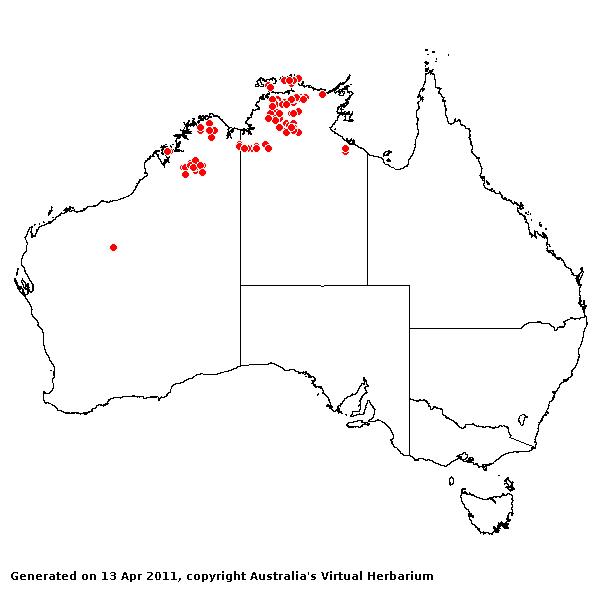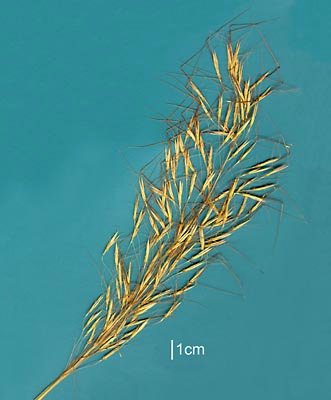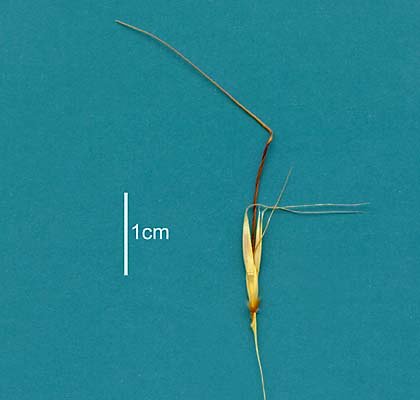Chrysopogon latifolius S. T. Blake. Univ. Qld Dept. Biol. Pap. 2 (3): 7 (1944).
Classification. (GPWG 2001) : Subfamily Panicoideae. Andropogoneae.
Type of Basionym or Protologue Information: Northern Territory. without definite locality, July-August, 1911 ..., Gilruth & Spencer s.n (HT: MEL).
Key references (books and floras): [1952] C.A.Gardner, Flora of Western Australia 1 Gramineae (322), [2002] D.Sharp & B.K.Simon, AusGrass, Grasses of Australia.
Habit. Perennial. Culms stature robust to moderate, 100–150 cm tall. Lateral branches branched. Leaf-sheaths glabrous on surface or hairy. Ligule a fringe of hairs, 0.5 mm long. Leaf-blades 30–60 cm long, 10–20 mm wide. Leaf-blade surface scaberulous.
Inflorescence. Inflorescence compound, a panicle of rames. Panicle linear, 20–25 cm long, 4 cm wide. Rhachis obsolete.
Spikelets. Spikelets sessile, 1 in the cluster. Companion spikelets pedicelled, 2 in the cluster. Companion spikelets developed, male, 7.5–9 mm long. Companion spikelet glumes awned. Fertile spikelets 2-flowered, the lower floret barren (rarely male), the upper fertile, comprising 1 basal sterile florets, comprising 1 fertile floret(s), without rachilla extension, linear or lanceolate, laterally compressed, 7.7–8.3 mm long.
Glumes. Glumes dissimilar, firmer than fertile lemma. Lower glume oblong, cartilaginous, much thinner above, much thinner on margins, without keels, 4–5 -nerved. Upper glume lanceolate, keeled, 1-keeled. Upper glume surface scabrous. Upper glume apex awned. Florets. Basal sterile florets 1, barren, without significant palea. Lemma of lower sterile floret hyaline, 2 -nerved.
Fertile lemma 4.5–5 mm long, without keel. Lemma apex dentate, awned, 1 -awned. Median (principal) awn from a sinus, 37–43 mm long overall, with a twisted column. Palea 0–2 -nerved. Anthers 3. Grain 3–5 mm long.
Continental Distribution: Australasia.
Australian Distribution: Western Australia, Northern Territory.
Western Australia: Gardner, Fitzgerald, Dampier. Northern Territory: Darwin & Gulf.
Notes. From tropical W.A. and N.T. growing in wet areas or Eucalyptus woodlands on sandy soils. Flowers Sept.--June.




